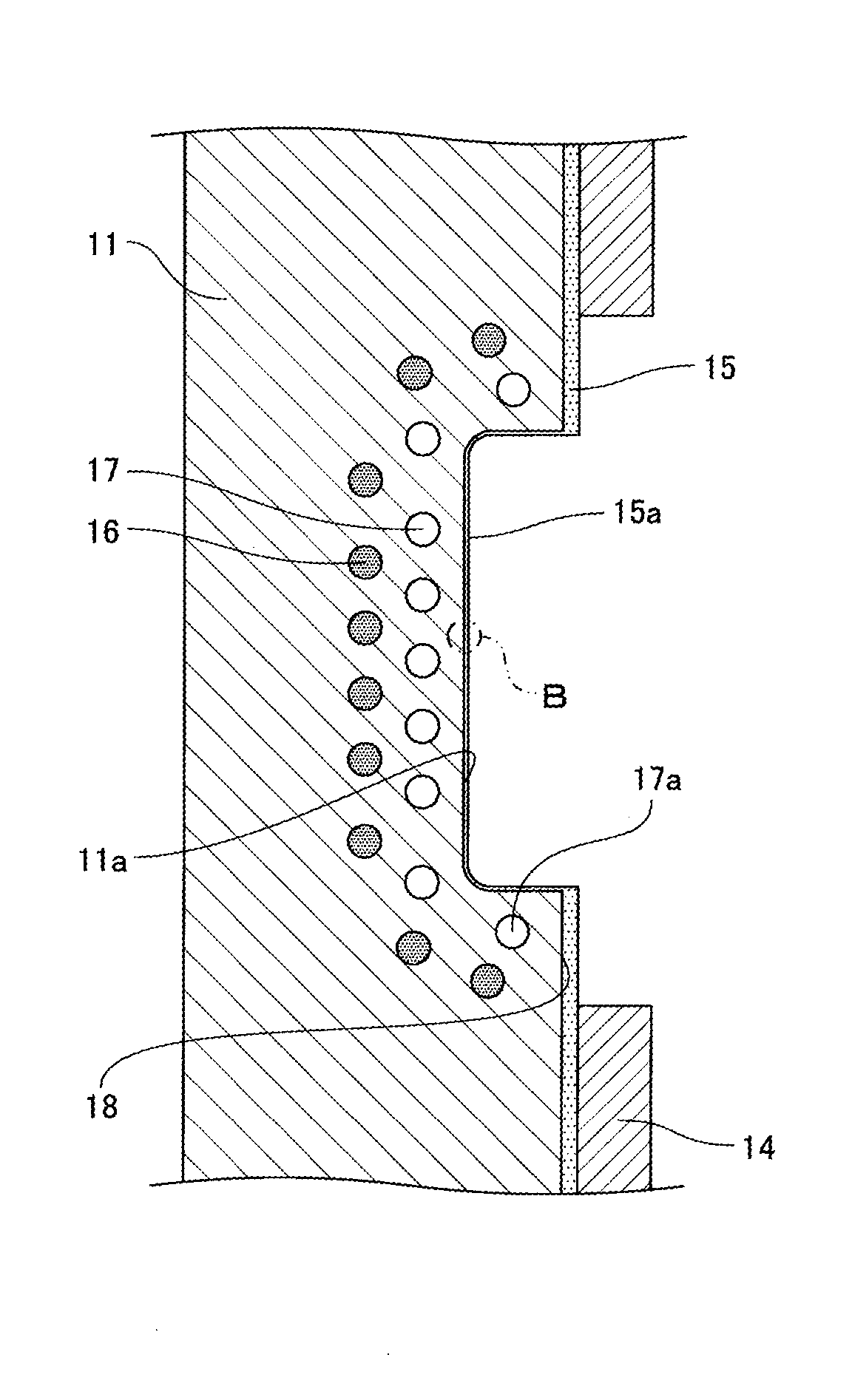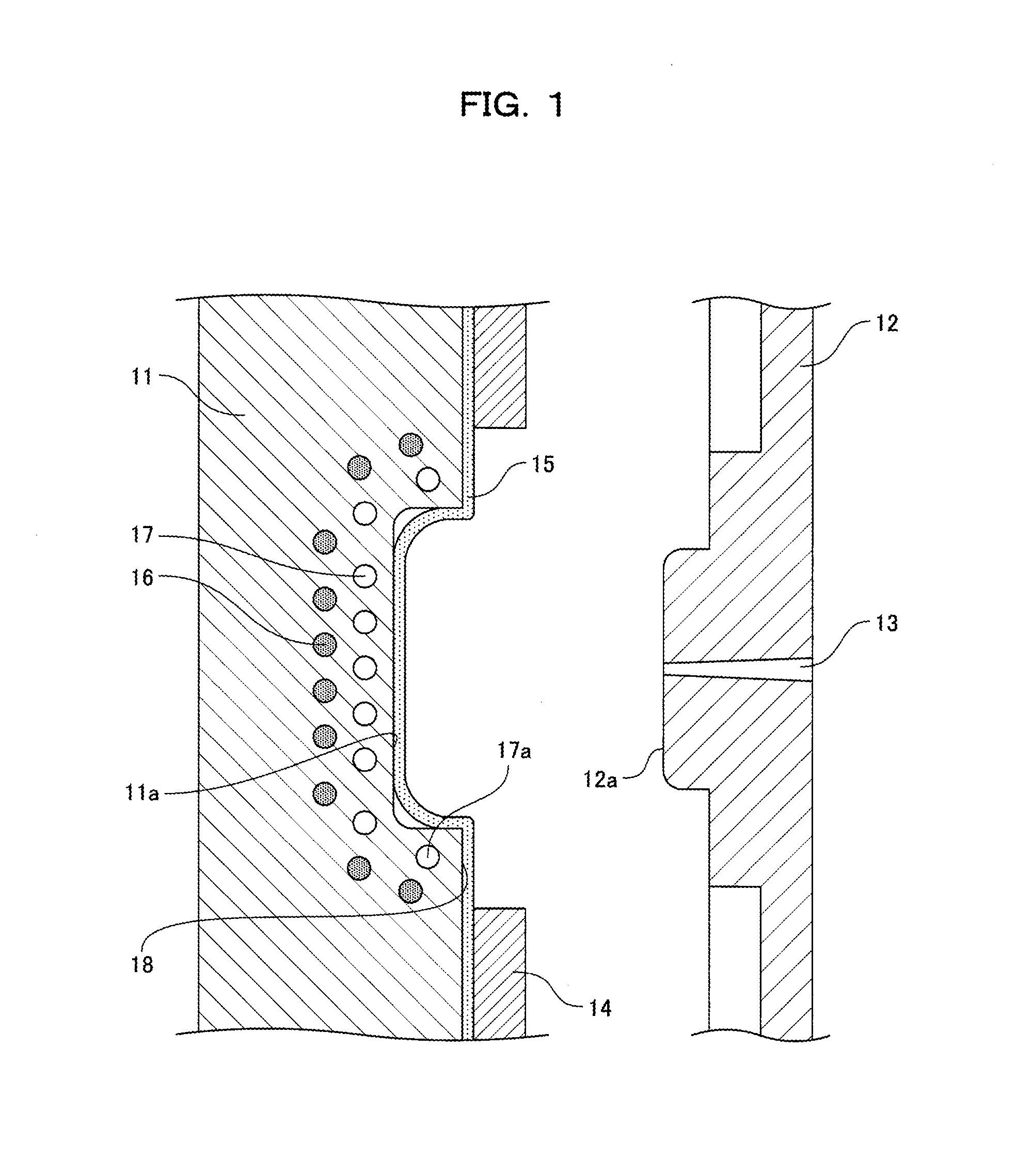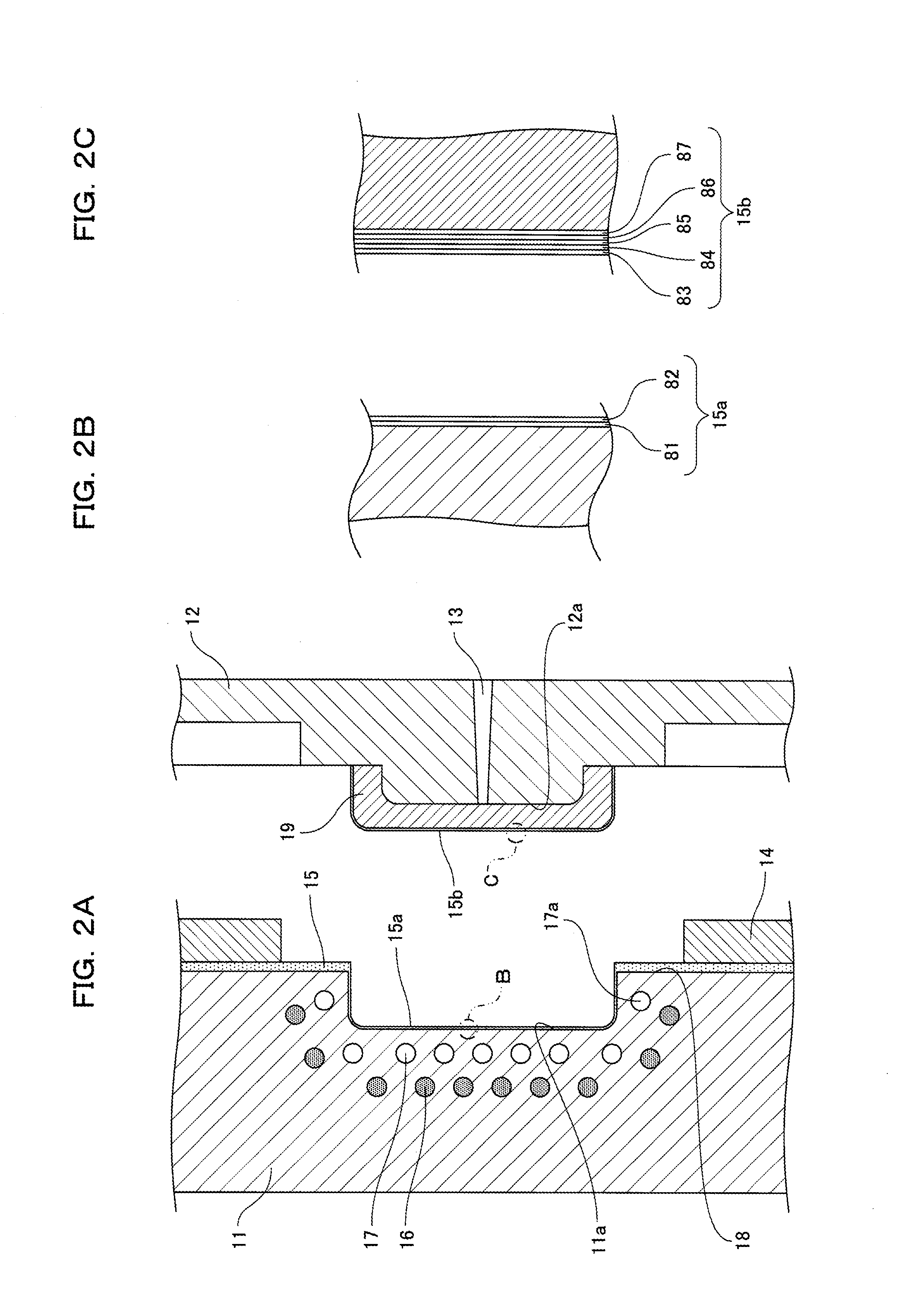Injection molding method and injection mold assembly
a technology of injection molding and injection molds, which is applied in the direction of lamination, chemistry apparatus and processes, applications, etc., can solve the problems of insufficient bonding strength, inability to exhibit original adhesion, and decrease in the bonding strength between the surface of the molded article and the transfer layer, so as to reduce the deterioration of printed designs, and reduce the effect of deterioration
- Summary
- Abstract
- Description
- Claims
- Application Information
AI Technical Summary
Benefits of technology
Problems solved by technology
Method used
Image
Examples
first embodiment
[0046]FIG. 1 is a side cross-sectional view illustrating the main part of a structural example of an injection mold assembly according to a first embodiment. The injection mold assembly performs an injection-molding synchronous foil transfer process. Specifically, in the injection mold assembly, molten resin (engineering plastics) is injected into the molding space (cavity) of an injection mold to obtain a molded article while the transfer layer of a multilayer film disposed in the cavity is transferred onto the surface (transfer surface) of the molded article. The injection mold assembly will be specifically described below.
[0047]As shown in FIG. 1, the injection mold assembly includes a movable mold 11 that is an example of a first mold and a fixed mold 12 that is an example of a second mold. An injection mold is generally made of steel.
[0048]The movable mold 11 has a dented cavity forming surface 11a that is an example of a first cavity forming surface. In the first embodiment, t...
second embodiment
[0076]Referring to FIG. 4, constituent elements different from those described in the first embodiment will be mainly described below according to a second embodiment. FIG. 4 is a plan view schematically showing a structural example of a dented cavity forming surface 11a of a movable mold 11 according to the second embodiment. Parts not illustrated in FIG. 4 are identical to those of the first embodiment and thus the explanation thereof is omitted.
[0077]In the second embodiment, as shown in FIG. 4, the dented cavity forming surface 11a of the movable mold 11 has a rectangular bottom. The bottom has four corners 11b that are curved parts (curved surfaces) with a radius of curvature. Thus, a rounded side connected to the bottom has four straight lines and four corners connecting the four straight lines in plan view. The four corners are the curved parts (curved surfaces).
[0078]In the first embodiment, the temperature of the cooling circuit 17 near the injection mold divided face 18 fo...
third embodiment
[0084]Referring to FIG. 5, constituent elements different from those described in the first embodiment will be mainly described below according to a third embodiment. FIG. 5 is a side cross-sectional view illustrating the main part of a structural example of an injection mold assembly according to the third embodiment. In FIG. 5, the same constituent elements as in FIG. 1 are indicated by the same reference numerals, and the explanation thereof is omitted.
[0085]In the injection mold assembly of the third embodiment, as shown in FIG. 5, a movable mold 11 includes a cooling circuit 20 that is different from the cooling circuit 17 of the first embodiment. The cooling circuit 20 is opposed to the opening end face of a gate portion 13 of a fixed mold 12. For example, in the case where cooling water is passed through the cooling circuit 20, the cooling circuit (water passage) 20 may have a diameter of about 10 mm.
[0086]On a dented cavity forming surface 11a of the movable mold 11, molten ...
PUM
| Property | Measurement | Unit |
|---|---|---|
| glass transition temperature | aaaaa | aaaaa |
| surface temperature | aaaaa | aaaaa |
| temperature | aaaaa | aaaaa |
Abstract
Description
Claims
Application Information
 Login to View More
Login to View More - R&D
- Intellectual Property
- Life Sciences
- Materials
- Tech Scout
- Unparalleled Data Quality
- Higher Quality Content
- 60% Fewer Hallucinations
Browse by: Latest US Patents, China's latest patents, Technical Efficacy Thesaurus, Application Domain, Technology Topic, Popular Technical Reports.
© 2025 PatSnap. All rights reserved.Legal|Privacy policy|Modern Slavery Act Transparency Statement|Sitemap|About US| Contact US: help@patsnap.com



